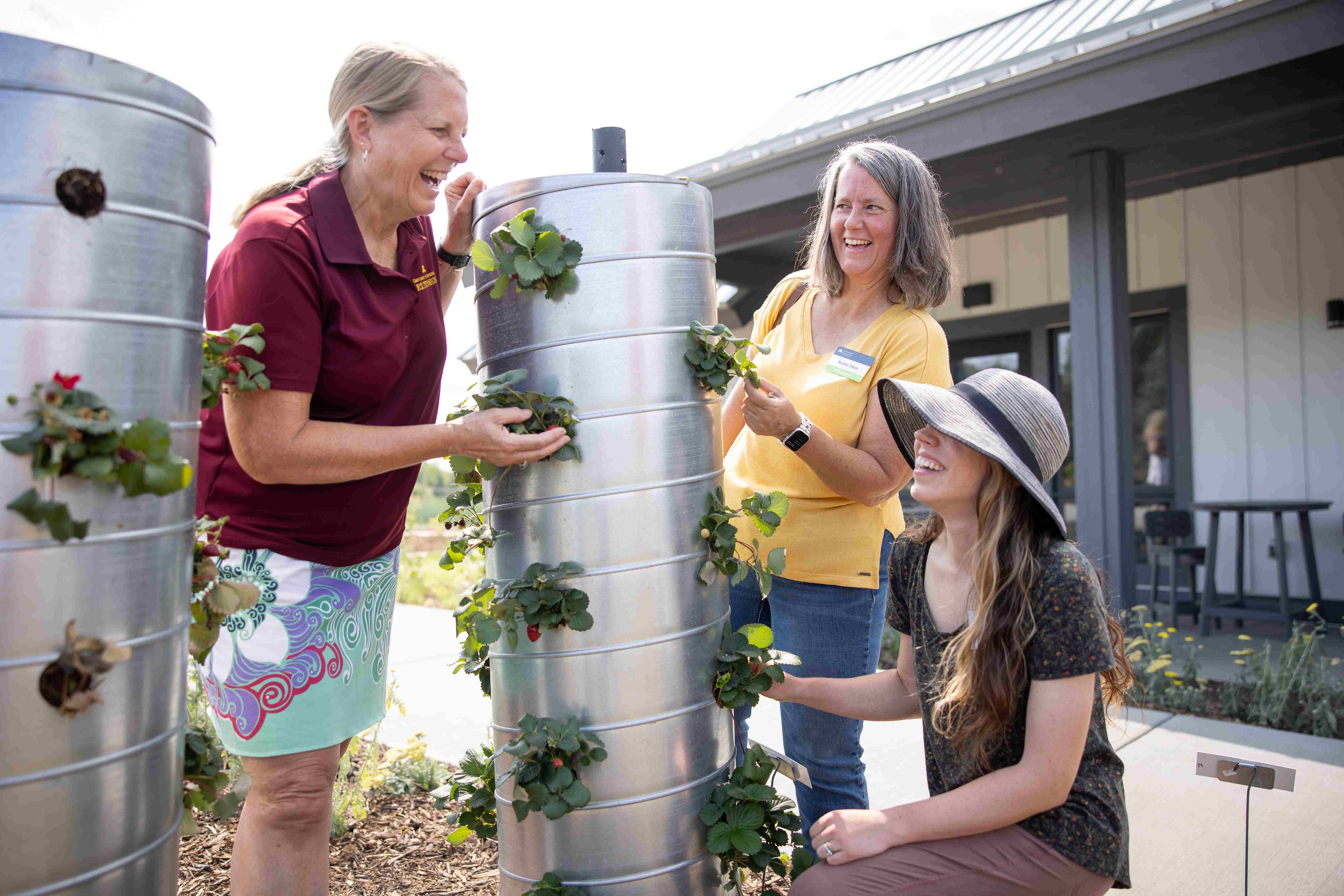
Food for Thought in the Home Landscape
Everyone wants a yard that is both beautiful and functional. For anyone wanting to grow food and make their landscapes more productive, there are many ways to incorporate both, outside of the usual raised beds, berry bushes, and fruit trees. Many more plants and plant parts than you might think are edible, and you can create layered designs to maximize density and diversity. Read this article for ideas and resources that you can put to use in your own yard.
Greg Siems, Dakota County Master Gardener Intern

When you think of an edible garden, what comes to mind? You might picture some raised beds filled with annual vegetables, a healthy patch of raspberries or rhubarb, or perhaps a small grove of dwarf fruit trees.

Beyond these familiar and delicious friends, there are plenty of lesser-known roots, shoots, fruits and flowers that can be incorporated into your home landscape. The University of Minnesota Extension website provides a long of list fruits and flowers that can be grown in Minnesota and incorporated into your home landscape. Of course, only certain flowers are edible, so you must learn which flowers and which parts of a flower are edible. And make sure that the plants you eat have not been treated with harmful chemicals. Some examples of edible flowers listed by the U of M Extension at the above link are: nasturtiums, calendula, squash flower, borage, anise hyssop, bachelor buttons, beebalm and many more.

If you are interested in exploring edibles and how they can be incorporated in your garden, visit the Minnesota Landscape Arboretum’s Foodscape. The Foodscape at the Farm at the Arb is a great model of “sustainable landscape design that combines the intentional use of food plants for their edible qualities as well as their ornamental value.” Thankfully, there doesn’t always have to be a tradeoff between a yard that looks good and one that tastes good.

Many of us are limited on space for our gardens. In relatively small urban and suburban lots, our eyes can easily become bigger than our yards when it comes to the wide variety of tasty things we could grow. If so, you should become familiar with the food forest approach. A food forest is made up of a variety of plants that mimic growth patterns found in nature. A food forest typically includes larger food-producing trees, small trees and shrubs, and a floor of annuals, perennial, root and ground cover crops and vines. Food forest projects are often group partnerships which make use of larger growing areas. However, you don’t need room for a full “forest” to take advantage of planting in layers. Making full use of the canopy, understory, and floor is a great way to maximize diversity and yields in your home garden.
There are also culinary and medicinal uses for many plants that were not intentionally cultivated. Dandelions are a well-known example; others such as plantain, purslane, and even the dreaded creeping bellflower provide some benefits. Learn more about what to look for at this U of M Extension article on weeds so that the next time you are out weeding, consider if there might be a few things you’d like to try in your next salad! What’s more, if you happen to have a taste for these plants, you can harvest to your heart’s content, knowing that you’re helping to strengthen your local ecosystem in the process.
Inspiration abounds for expanding your palate and introducing some exciting new elements to your existing panoply of plants. Check out a few of these other Extension resources for more ideas and information:
“Edible Gardens for People and Pollinators” - University of Minnesota Extension
“The Incredible Edible Landscape” - Iowa State University Extension
“Edible Perennials” - University of Illinois Extension
“Foraging for Backyard Edibles” - North Carolina State Extension
So, take advantage of this great research and put it to use in creating an attractive and edible garden in your yard.
Reference:
Photo credits: University of Minnesota Extension (1-3)




